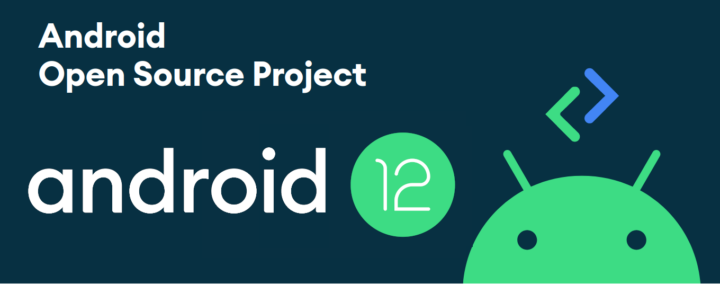Google has now pushed Android 12 source code to AOSP (Android Open Source Project), after introducing Android 12 new features and the developer preview in February, and the first Android 12 Beta in May. The latest version of the mobile operating system should become available on recent Google Pixel phones in the next few weeks, followed by phones from Samsung, OnePlus, Oppo, Realme, Tecno, Vivo, and Xiaomi.
You can download the code with the following command :
|
1 2 |
repo init -u https://android.googlesource.com/platform/manifest -b android-s-beta-5 repo sync |
Eventually, there should be an Android 12 tag in the manifest similar to android-12.0.0.0_r1. But that still means developers can start retrieving the source code to adapt the operating system to their needs, for example, to implement support for single board computers or TV boxes that do not use Android TV OS.
The release notes for the source code list of the changes made to Android 12 OS including:
- Support for Android Rust programming language
- Boot image header version 4 for Generic Kernel Image (GKI) architecture support, and boot signature
- Change to bootconfig with a mechanism for passing configuration details from the build and bootloader to Android 12 replacing the androidboot.* kernel cmdline options from earlier version.
- Support for multiple vendor ramdisks which can be flashed through a fastboot command that pulls the full vendor_boot image from a device.
- Update to Audio HAL V7
- Support for 5G network slicing
- Non-persistent MAC randomization type, which allows Android to re-randomize MAC addresses for certain networks at the start of every connection
- Wi-Fi AP/AP concurrency feature, which allows devices to bring up a bridged Dual (AP+AP) tethering hotspot.
- A bunch of automotive features including virtualization, per-application network selection (PANS), rotary encoder, etc…
- Changes in the Display framework to support hot plug handling and dynamic display capabilities for external (HDMI/ DisplayPort) displays
- Compatible media transcoding allows devices to use HEVC for video capture while maintaining compatibility with apps.
- Android TV – HDMI-CEC control service makes sure power control of the HDMI-connected display aligns with power control of the internal display, plus changes to the Tuner framework
- Etc…
Android 12 should be more efficient and perform faster than previous versions of Android with a reduction of the CPU time used by core system services by 22% and the use of big cores by 15%, as well as faster app startup times and optimized I/Os. The announcement lists more features and improvements, but those are mostly for Android app developers.
Google will also discuss Android 12 in more detail at the Android Dev Summit 2021 taking place on October 27-28. As one should expect, it will be more about helping developers make sure their apps are compatible with Android 12 rather than dealing with the intricacies of the operating system.

Jean-Luc started CNX Software in 2010 as a part-time endeavor, before quitting his job as a software engineering manager, and starting to write daily news, and reviews full time later in 2011.
Support CNX Software! Donate via cryptocurrencies, become a Patron on Patreon, or purchase goods on Amazon or Aliexpress





